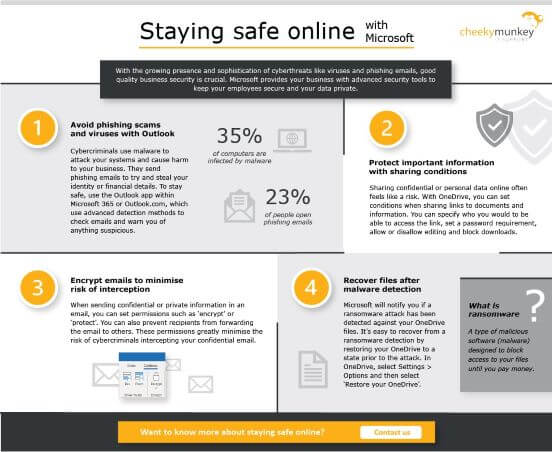2020 marked a rapid shift for businesses as they were forced to undergo complex digital transformations. For many companies, that meant getting workers up and running remotely in the quickest way possible; with short-term fixes rather than long-term strategies.
As we enter a new year, it’s becoming clear that make-shift remote set-ups need to be replaced with more permanent and definite options. Organisations are looking to regain lost productivity. They need a long-term remote and flexible working strategy that aligns with their business values. For many, developing a strong strategy means investment in two key areas: cloud infrastructure and security. More importantly, though, businesses should be focusing on 3 key actions:
-
Cultivate company culture
All strategic decisions should be made with employee happiness in mind. Creating an environment in which workers feel valued and content is key to long-term effectiveness and success. Using Microsoft Teams integrations or more bespoke AI solutions, enterprises can keep track of employee engagement and ask for feedback when problems are noted. They can also dive into Azure Application Insights or Microsoft 365 usage analytics to determine whether employees are overworking. This analytics-based approach should be combined with empathetic and open-minded action to ensure employees feel supported, rather than spied on.
-
Accelerate with automation
Repetitive administrative tasks are dull in any workplace, but they can create more conflict when employees are working from home without a support network. In many cases, though, such tasks can be fully or partially automated.
Microsoft Power Automate is one solution that can be used to automate processes and tasks. A business can design a process from start to finish using intuitive flow diagrams and deep integrations. With if-this-then-that thinking, they’re able to receive notifications, sync files and collect data when a certain action occurs. A library of templates lets an employee easily and automatically save Outlook email attachments to OneDrive or post in Teams when a new Planner task is created.
-
Create virtual collaboration opportunities
Finally, and perhaps most importantly, organisations should enable their employees to collaborate and communicate seamlessly regardless of location. Even as some workers preferring to work at the office again, provisions should be made so that inclusivity is felt by all employees.
Microsoft Teams is has taken the remote working world by storm recently, with daily active users jumping from 20 million in November 2019 to 115 million in October 2020. For the first time, many companies are realising its power to unlock company-wide collaboration using a single, communicative hub.
In addition to Teams’ popularity, the features of Microsoft 365 as a whole offer huge value for flexible working. Users worldwide are clocking up to 30 billion minutes using the software in a single day. A SharePoint deployment is one area where companies can really provide value to their employees, enabling real-time collaboration, sharing, and editing across all documents in the Office suite.
Covid-19 regulations have helped businesses realise that flexible working can provide value even in industries where it has previously been thought impossible. To truly capitalise on the productivity improvements flexible working offers, however, you need more than just a remote desktop; companies should be focusing on developing a strong company culture and leveraging automation wherever possible. Employees should be offered the right virtual collaboration methods to enable them to connect quickly and easily; as they would in the office.



 Previous
Previous







